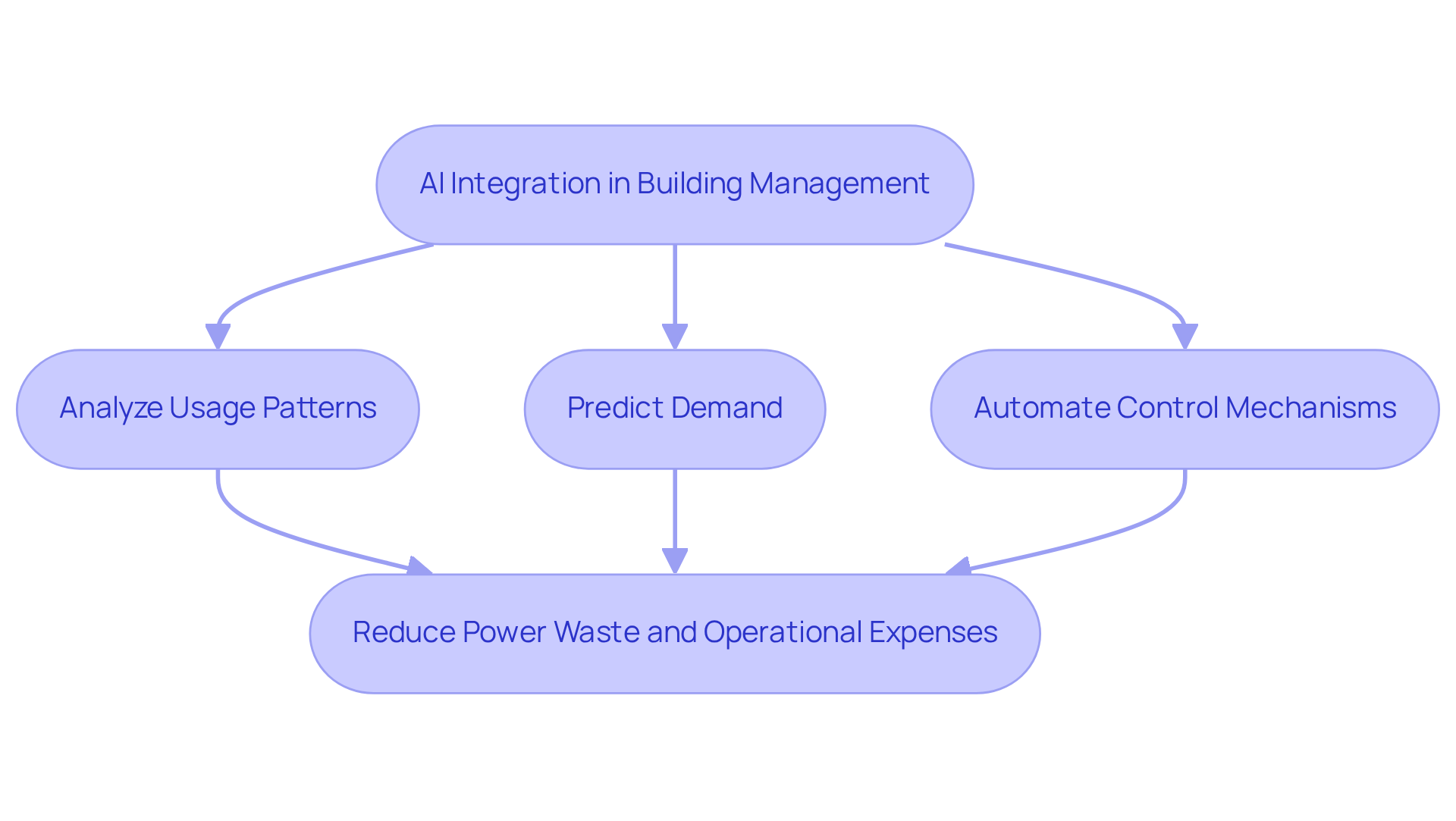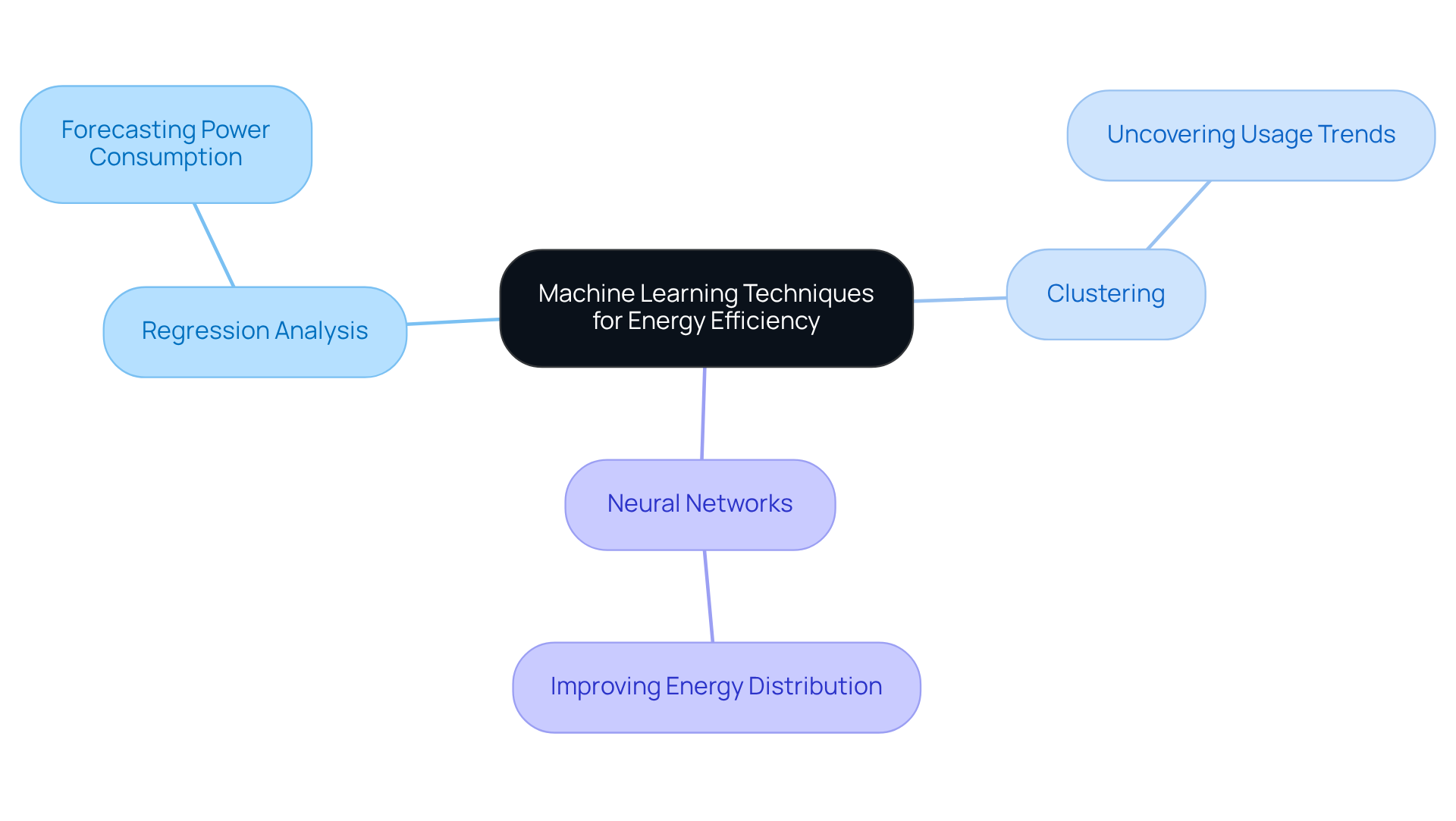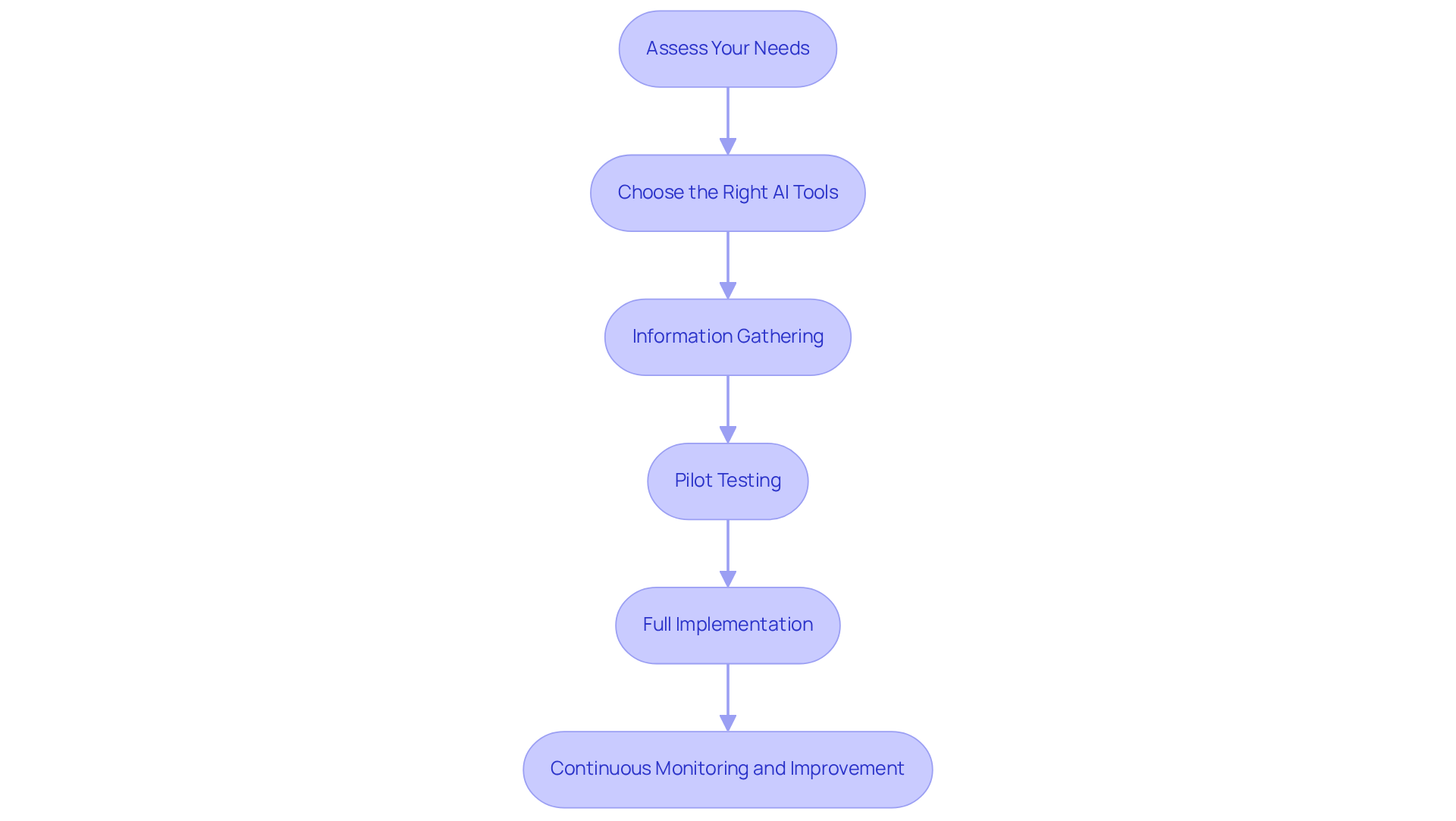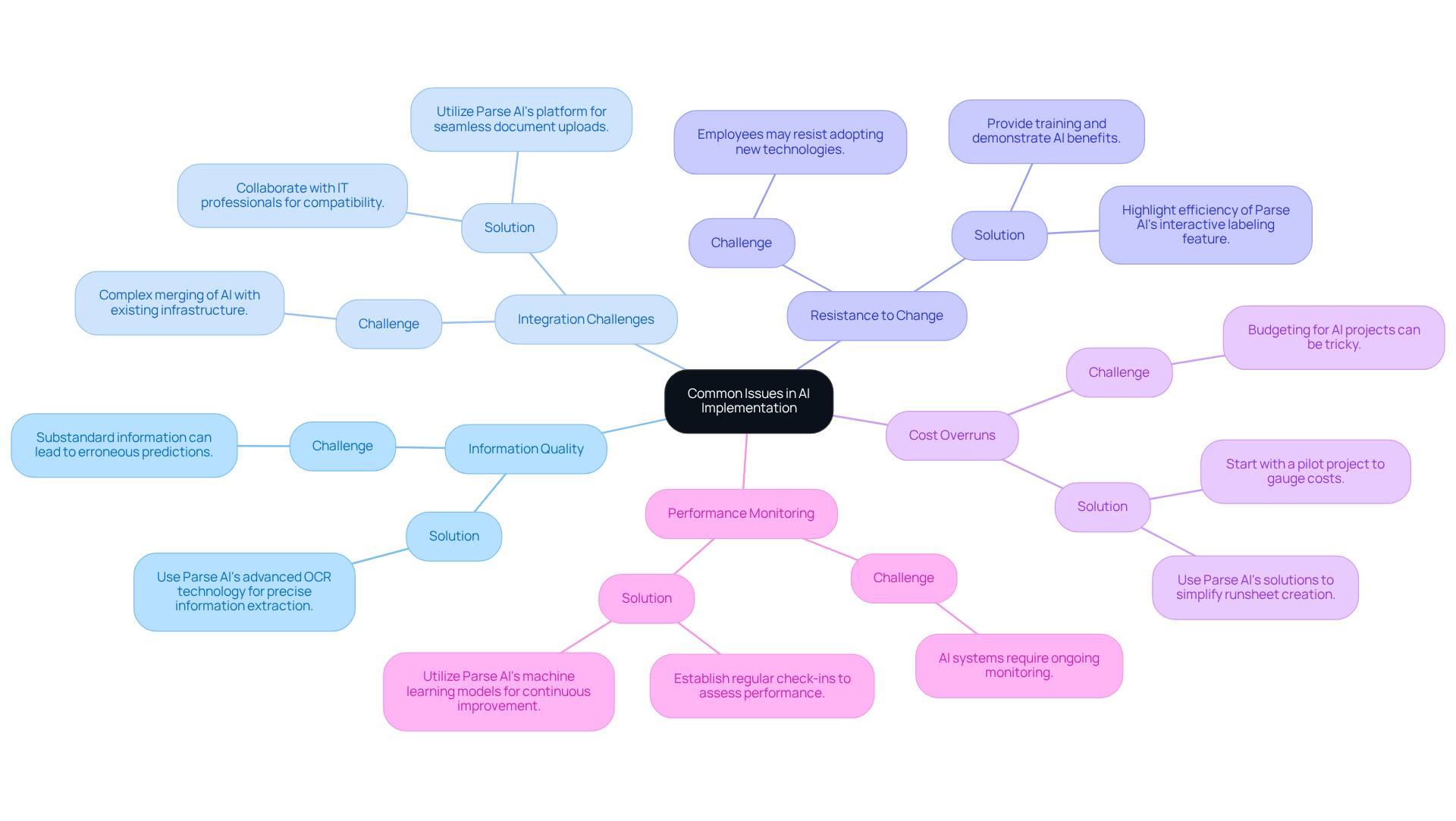Overview
The article focuses on the significant role of AI in optimizing energy efficiency within real estate projects. It emphasizes that AI technologies, particularly machine learning and predictive analytics, empower property managers to analyze energy usage patterns effectively. Furthermore, these technologies enhance HVAC systems, ultimately leading to a reduction in operational costs and waste. Consequently, this advancement promotes sustainability in the real estate sector.
Introduction
The integration of artificial intelligence into building energy optimization is revolutionizing the real estate sector, offering unprecedented opportunities for sustainability and cost reduction. By harnessing advanced algorithms and machine learning techniques, property managers can significantly enhance energy efficiency and minimize waste, ultimately leading to lower operational expenses.
However, as the landscape evolves, stakeholders face critical questions:
- How can they effectively implement these AI solutions?
- What challenges must they navigate to ensure successful integration?
This article delves into the transformative role of AI in energy management, providing essential insights and practical steps for real estate professionals looking to optimize their projects.
Understand AI's Role in Building Energy Optimization
AI for building energy optimization plays a transformative role in enhancing resource optimization by utilizing advanced algorithms to analyze usage patterns, predict demand, and automate control mechanisms. This integration of AI for building energy optimization into property management frameworks enables realty professionals to achieve significant reductions in power waste and operational expenses.
For instance, AI for building energy optimization can improve HVAC systems by adjusting settings based on occupancy and weather forecasts, ensuring effective resource utilization. Understanding these applications is crucial for real estate developers and managers aiming to enhance sustainability and minimize costs in their projects.

Explore Machine Learning Techniques for Energy Efficiency
Machine learning methods, such as regression analysis, clustering, and neural networks, play a crucial role in enhancing efficiency within buildings, especially when applying AI for building energy optimization. For example, regression models can accurately forecast power consumption based on historical data. In addition, clustering techniques can uncover trends in power usage across various building categories. Furthermore, neural networks significantly improve energy distribution by utilizing AI for building energy optimization and learning from real-time data inputs.
Utilizing these methods requires a robust understanding of analytics and the ability to interpret outcomes effectively. Consequently, real property experts should consider investing in training or forming collaborations with data scientists to harness these powerful tools. This strategic approach not only enhances operational efficiency but also positions professionals to stay ahead in a competitive market.

Implement AI Solutions in Your Real Estate Projects
To implement AI solutions in your real estate projects, follow these steps:
-
Assess Your Needs: Begin by identifying specific resource management challenges within your buildings. This could encompass high utility costs, inefficient HVAC systems, or inconsistent consumption patterns.
-
Choose the Right AI Tools: Research and select AI tools that align with your identified needs. Consider platforms that provide AI for building energy optimization, including features like predictive analytics, real-time monitoring, and automation capabilities.
-
Information Gathering: Collect historical energy usage information and other pertinent metrics. Ensure that the data is clean and structured for analysis.
-
Pilot Testing: Prior to extensive implementation, carry out a pilot test with one building or setup. Monitor performance and gather feedback to refine your approach.
-
Full Implementation: Deploy the AI for building energy optimization solution throughout your portfolio, ensuring that all stakeholders are trained and aware of the new processes.
-
Continuous Monitoring and Improvement: Regularly assess the performance of the AI systems and make adjustments as necessary to optimize energy efficiency further.

Troubleshoot Common Issues in AI Implementation
When implementing AI solutions, particularly in the realm of document processing for real estate, several common issues may arise:
-
Information Quality: Substandard information quality can lead to erroneous predictions. It is crucial to ensure that your information is clean, complete, and relevant. Leveraging Parse AI's advanced OCR technology can assist in extracting vital information precisely, thereby enhancing information quality from the outset.
-
Integration Challenges: Merging AI technologies with existing infrastructure can be complex. Collaborate closely with IT professionals to ensure compatibility and facilitate smooth transitions. Parse AI's platform allows for seamless uploads of documents from online courthouses, making integration into your current workflows easier.
-
Resistance to Change: Employees may resist new technologies. Providing training and demonstrating the benefits of AI are essential to encourage adoption. Highlighting the efficiency and simplicity of Parse AI's interactive labeling feature can help staff recognize the value in embracing this technology.
-
Cost Overruns: Budgeting for AI projects can be tricky. Initiating with a pilot project allows you to gauge costs before scaling up. Utilizing Parse AI's document processing solutions can simplify runsheet creation, potentially lowering expenses associated with manual information entry and processing.
-
Performance Monitoring: AI systems require ongoing monitoring to ensure they function as intended. Regular check-ins should be established to assess performance and make necessary adjustments. With Parse AI's machine learning models, you can continuously improve data extraction processes, ensuring optimal performance over time.
By anticipating these challenges and preparing solutions in advance, particularly through the use of Parse AI's innovative document processing capabilities, you can significantly enhance the likelihood of a successful AI implementation in your real estate projects.

Conclusion
Integrating AI into building energy optimization marks a pivotal advancement for real estate professionals aiming to enhance sustainability and reduce operational costs. By leveraging advanced algorithms and machine learning techniques, stakeholders can significantly improve resource management and energy efficiency, addressing both environmental responsibilities and economic pressures. The transformative potential of AI in this domain is profound; it empowers developers and managers to make informed decisions that lead to smarter, more efficient buildings.
Throughout this article, key insights have been presented, highlighting the importance of:
- Understanding AI's role
- Exploring machine learning techniques
- Implementing effective AI solutions
- Troubleshooting common challenges
From optimizing HVAC systems to utilizing predictive analytics, the strategies outlined provide a comprehensive framework for real estate professionals to harness AI's capabilities. Each step, from assessing needs to continuous improvement, is crucial for achieving successful energy optimization outcomes.
The significance of adopting AI in building energy management extends beyond immediate cost savings; it fosters a culture of innovation that can redefine the real estate landscape. As the industry evolves, embracing these technologies will not only enhance operational efficiency but also contribute to a more sustainable future. Real estate professionals are encouraged to take proactive steps in implementing AI solutions, ensuring they remain competitive and responsive to the growing demands of energy efficiency and environmental stewardship.
Frequently Asked Questions
What is AI's role in building energy optimization?
AI plays a transformative role in building energy optimization by using advanced algorithms to analyze usage patterns, predict demand, and automate control mechanisms, leading to enhanced resource optimization.
How does AI help in reducing power waste?
AI helps reduce power waste by integrating into property management frameworks, allowing realty professionals to achieve significant reductions in operational expenses and power consumption.
Can you provide an example of AI application in building energy optimization?
An example of AI application is its ability to improve HVAC systems by adjusting settings based on occupancy and weather forecasts, ensuring effective resource utilization.
Why is understanding AI applications important for real estate professionals?
Understanding AI applications is crucial for real estate developers and managers as it helps them enhance sustainability and minimize costs in their projects.




